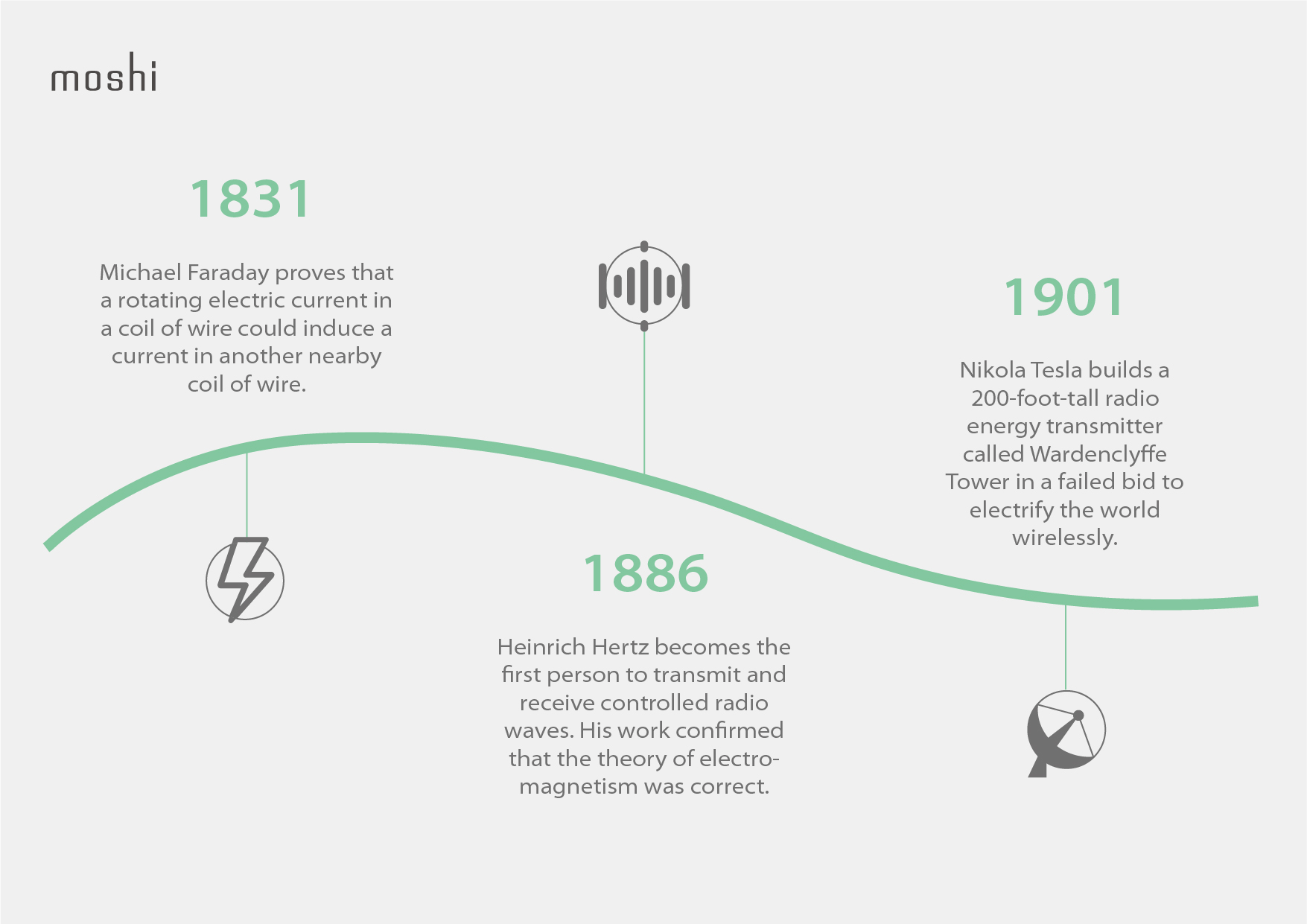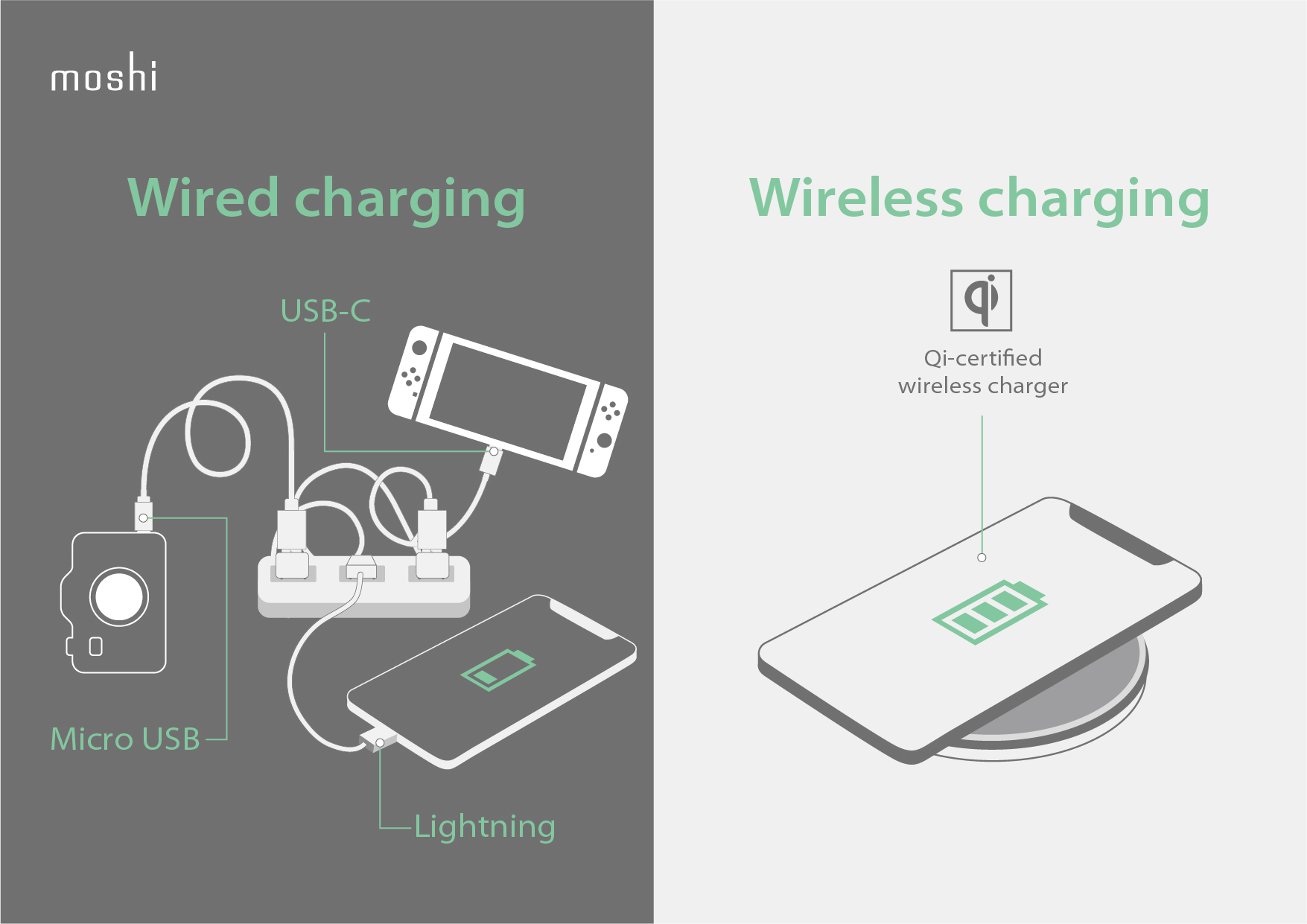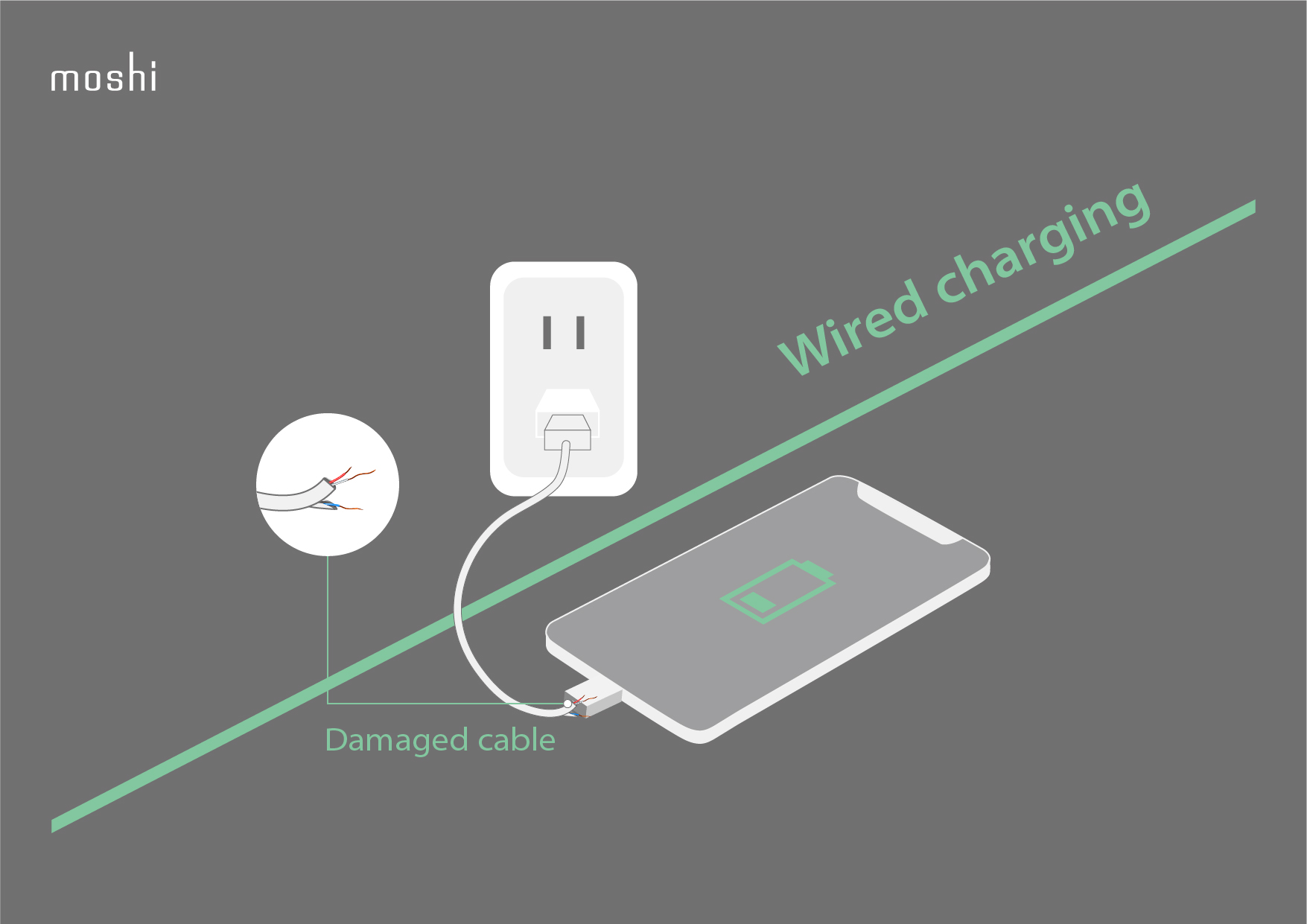The Ultimate Guide to Wireless Charging
When wireless charging first hit mainstream devices around 2012, the media hype was huge. Tech writers promised readers they'd be able to throw out their collections of mismatched cables and adapters. To charge, you'd plop your phone on a table, bowl, or desk as you walked by—like magic.
Although there were still a few kinks to work out, wireless charging technology continued to advance. Today, it's safe to say that convenient and efficient wireless charging has arrived—and it just keeps getting better.
Was the initial hype surrounding the technology warranted? As more consumers discover the ease and simplicity of wireless charging, it looks like the answer is yes.
History of wireless inductive charging
The desire to go wireless isn't new. People have been trying to transmit power without wires as long as there have been practical applications for it.
Here's a brief timeline of the early years of wireless power transmission:

Despite this progress, significant barriers to efficient wireless transmission remained. With few practical applications to be found, the technology crawled forward over the next 100 years. But the mobile device boom at the beginning of the 21st Century created a big incentive for researchers to revisit wireless charging.
This massive new market for wireless charging spurred progress, but it also created conflict—and headaches for consumers. For several years starting in 2006, different wireless charging standards competed for dominance.
These included the Powermat standard (adopted by heavy hitters like General Motors, Starbucks, and Delta Airlines) and the Wireless Power Consortium's (WPC's) Qi standard (first backed by tech powerhouses like Samsung, Google, and Verizon).
During this period, wireless charging fell short of its promise to make mobile devices easier to use. Most smartphone brands supported only one wireless charging standard (with the notable exception of Samsung). This often left consumers unable to use wireless charging stations without an adaptive case for their device.
By 2018, the Qi standard had won out. Apple's iPhone 8 family was the first generation of Apple phones to support wireless charging, and the rest is history. Powermat's entry into the WPC and the widespread adoption of the Qi standard ended the wireless charging wars.
Finally, wireless charging became practical thanks to everyone following a single standard.
Today, almost every wireless charger uses Qi, and most mobile devices support Qi wireless charging. The glass backs found on many new smartphones reflect the enormous demand for wireless charging (metal backs interfere with charging efficiency).
In the future, we can expect wireless charging to move well beyond smartphones. Before long, laptops, kitchen appliances, and even electric cars may all be capable of wireless charging.
"Today, almost every wireless charger uses Qi, and most mobile devices support Qi wireless charging."
How does wireless charging work?
Wireless charging works off the principle of electromagnetic induction. It's the same principle behind those induction stoves that have been around for years.
Both the charger and the receiving device contain wireless charging coils. The transmitting coil is located in the charging pad. The receiving coil is situated at the back of the phone and connected to the battery.
The transmitting coil converts electricity and emits an alternating electromagnetic field. When the receiving coil is within this field, it turns the energy into an electric current that is sent to the battery.

The evolution of Qi
The Qi standard (pronounced "chee") is named after the Chinese concept of the flow of vital energy through every living thing.
Set by the WPC, the Qi standard defines various power specifications that correspond to how much energy flows between charger and device. Qi also includes a data transfer spec which lets the device request the optimal amount of power from the wireless charger.

The Baseline Power Profile (BPP) specification supports up to 5 W of power output. The Extended Power Profile (EPP) specification supports up to 15 W. Both BPP and EPP are used to charge mobile devices, but EPP is more advanced thanks to its fast-charging support. For a more in-depth explainer, check out our blog article.
The Qi standard also includes a Medium power spec that currently delivers 30-65 W (it's expected to eventually support up to 200 W). This spec is used for larger devices like kitchen appliances, robotic vacuum cleaners, power tools, and drones.

Fast-charging with Qi
The difference between BPP and EPP may seem technical, but it has a significant impact on your wireless charging experience. All wireless charging products for mobile devices use either BPP (5 W maximum) or EPP (15 W maximum), and you might think that since EPP chargers can output more power, buying an EPP charger will automatically lead to faster charging. But that's not necessarily the case.
Your mobile device's ability to receive power is the limiting factor when it comes to charging speed. Your device must be able to receive 7 W of power to be capable of fast wireless charging, no matter what kind of charger you use.
Your phone's ability to receive power output is predetermined by the manufacturer. Here are the specs for a few major brands:
- Apple: 7.5 W
- Sony: 11 W
- LG: 10 W
- Google: 12 W*
- Samsung: 9 W**
*12 W charging for Pixel 5 devices
** Samsung requires that wireless chargers pass the additional Samsung Proprietary Power Delivery Extension (PPDE) certification in order to deliver power above 5 W. EPP chargers not certified under this extension will only charge at BPP wattage when used with Samsung phones. Read more about Samsung phones which support Qi wireless charging.
"Your device must be able to receive 7 W of power to be capable of fast wireless charging, no matter what kind of charger you use."
Even if your phone and charger both support fast wireless charging, choosing the wrong accessories can still slow you down. Both your cable and wall adapter must be able to receive enough power to be capable of fast charging. For example, if you own a 10 W charging pad plugged into a 5 W wall charger, your device will only charge at 5 W so you won't get the benefits of fast charging.
Make sure your device, cable, and wall charger all support enough power to enable fast wireless charging. Here's an example of a setup that will work:
- USB-C Wall Charger (10 W)
- USB-C to USB-C cable
- Charging pad (10 W)
What are the key advantages of wireless charging?
Less clutter
The main benefit of wireless charging is right there in the name—wireless. Wireless charging cuts down on clutter from charging cables. The only cable you'll need is the charging pad's power cable.

Easier charging
Wireless charging also eliminates the need to plug a cable into your phone. Ever plugged your phone in and discovered hours later that the cable connection wasn't secure—and your phone is still dead? Wireless charging eliminates that problem. Just place your phone on your charging pad, and it'll start charging right away.
Longer device life
No repeated cable plugging and pulling means less wear and tear on your phone's charging port. Since the charging port is a common point of failure for mobile devices, your phone may even last longer.
No cable compatibility issues
No charging cables also means you can say goodbye to that timeless problem among tech enthusiasts—mismatched connectors. No need to worry about not having a Lightning, USB-C, or Micro USB cable on hand anymore. All Qi devices work on all Qi charging pads.
Less e-waste
The benefits of reducing e-clutter go far beyond your personal tidiness. The current lack of a common wired charging standard leads to an enormous amount of unnecessary e-waste. The widespread adoption of wireless charging could help solve this problem.
Currently, most Android devices use USB-C ports, while Apple devices use the Lightning connector exclusively. That means that to switch from Android to Apple or vice versa, you need to get new charging cables (and maybe new adapters). Unfortunately, your old cables and adapters are very likely to end up in a landfill.
Charging cables may be small, but the e-waste problem isn't.

In January 2020, the European Parliament voted for new regulations to establish a universal charging standard for phone manufacturers in the European Union. The EU claims that agreeing on a shared charger standard will put an end to charger clutter and 50 million metric tonnes of e-waste annually (16.6 kg per inhabitant).
Wireless charging is ahead of the game when it comes to reducing e-waste. Qi wireless charging has already achieved a universal charging standard. Apple, Android, and Google all support the Qi standard, making it the most reliable charging standard today.
Safer charging products
As more users adopt wireless charging, additional benefits of standardized chargers will become clear. The quality of charging products on the market should go up, with fewer counterfeit chargers being sold. That will guarantee a higher level of safety for users worldwide.
6 myths about wireless charging
Despite its advancements, there are still many people with concerns about wireless charging. Most of these worries are holdovers from the old days of wireless charging when the standards weren't quite as refined.
Here are some of the most common myths and misconceptions busted.
1. Wireless charging is slow
This misconception may date back to wireless charging's 5 W days. It definitely was slow back then. But today's fast wireless charging pads can provide 10 or even 15 W of power, which is as fast or even faster than wired charging.
2. Wireless charging is inefficient
The conversion from electric current to electromagnetic field and back doesn't cause significant efficiency losses. You can recover as much as 80% of the input wattage when charging wirelessly, but make sure your wireless charger features an efficient coil design. Cheap uncertified wireless chargers tend to use inferior materials and components which can affect efficiency.
3. Wireless charging is dangerous
Some people think the energy transmitted wirelessly could be hazardous to your body. However, magnetic induction only works across very short distances. At a distance of only 4 cm, you're totally safe from any potential effects of the radiation, and charging pads do not emit electromagnetic radiation constantly. Qi-certified chargers won't produce a magnetic charging field unless a phone is on the pad.

4. Wireless charging can overheat your phone's battery
All charging (both wired and wireless) generates some heat, but solid electrical engineering can keep heat levels low enough to prevent battery damage. That's why it's essential to buy wireless chargers from a reputable brand. Learn why Moshi’s Q-coil technology keeps your device cool and was rated “the fastest wireless charger” in the world.

5. Frequent wireless charging degrades your phone's battery life
Charging in general doesn’t have an impact on battery life, and wireless charging may actually be safer than certain fast-charging cables. Qi wireless chargers use a lower current compared to wired charging, which creates a more stable charging scenario. Wireless chargers also make it easy to top off your battery throughout the day. By setting your phone on a nearby charging pad when not in use, you can prevent the battery from dropping below 50%, which may increase the overall lifespan of your battery.


6. Overnight wireless charging can damage your phone
For many people, overnight is the most convenient time to charge. However, some worry that charging while you sleep can lead to overcharging and potential battery damage. Luckily, this isn't something we need to be concerned about. Smartphone batteries have a charge control system that disconnects the battery from the charger as soon as the battery is 100% charged. No matter how long the phone sits on the charger, it stays at the cut-off of the charging current with no risk of overcharging. That applies to both wireless and wired charging.
The future of wireless charging
Wireless charging has a bold, bright future ahead of it. More and more manufacturers are including Qi support in their phones, and peripheral manufacturers are adding Qi charging to more devices.
Wirelessly charging your smartphone will probably get even easier as charging technology advances. Manufacturers like Google and Samsung now support reverse wireless charging on some models, which allows phones to wirelessly charge other phones and smaller devices such as earbuds.
The charging pad itself could be getting a makeover. Some devices like monitors and mouse pads now include integrated wireless charging. New accessories like Moshi’s SnapTo Series feature wireless charging built directly into the mount. Even furniture makers are getting in on the action by creating Qi-enabled tables and desks. That's precisely the kind of innovation that got people so excited about wireless charging when it first hit the scene.
Wondering when larger devices will cut the cord? It's already happening.
In June 2017, Dell launched the world's first laptop that can charge wirelessly using magnetic resonance charging technology. You can expect to see more manufacturers rolling out wireless charging-enabled laptops over the next few years.
Tired of trying to find counter space near an outlet for your Instant Pot, rice cooker, or food processor? Soon you won't need to. The WPC's upcoming Ki Cordless Kitchen standard will deliver up to 2200 W to kitchen appliances wirelessly.

When it comes to wireless charging, the future has finally arrived. There's never been a better time to adopt this promising technology.
Learn more: Q-coil Technology
Moshi’s Q-coil wireless charging module features a multilayer heat sink design for enhanced passive cooling. Unlike cheap wireless chargers made with entry-level components, Q-coil chargers stay cool even while fast-charging.

These are some of the high-quality components and materials that make this possible:
- Our charging coil module uses high-purity copper wire and a high quality ferrite sheet to improve charging efficiency and reduce temperature.
- Low-resistance DC/DC power converters improve conversion efficiency and regulate the circuit board's temperature.
- A special multilayer heat sink dissipates the charger's thermal energy downwards, reducing heat transfer between the charger and the phone.
- Built-in over-voltage, over-current, and over-temperature protection circuits make the charging process safer.
- Qi certification ensures charging compatibility, reliability and safety.
Learn more about the Qi wireless charging specification with our handy guide to Qi EPP, or check out our Q Collection Qi-certified wireless chargers.
Sample Block Quote
Praesent vestibulum congue tellus at fringilla. Curabitur vitae semper sem, eu convallis est. Cras felis nunc commodo loremous convallis vitae interdum non nisl. Maecenas ac est sit amet augue pharetra convallis nec danos.
Sample Paragraph Text
Praesent vestibulum congue tellus at fringilla. Curabitur vitae semper sem, eu convallis est. Cras felis nunc commodo eu convallis vitae interdum non nisl. Maecenas ac est sit amet augue pharetra convallis nec danos dui.
Cras suscipit quam et turpis eleifend vitae malesuada magna congue. Damus id ullamcorper neque. Sed vitae mi a mi pretium aliquet ac sed elitos. Pellentesque nulla eros accumsan quis justo at tincidunt lobortis denimes loremous. Suspendisse vestibulum lectus in lectus volutpat, ut dapibus purus pulvinar. Vestibulum sit amet auctor ipsum.










animi dolorum exercitationem similique eius ut rerum et ut enim aut vitae magni voluptates possimus ut ut non voluptas accusantium velit. animi nam ut eum aperiam occaecati maxime earum soluta dicta q
Советы по оптимизации продвижению.
Информация о том как работать с низкочастотными запросами и как их подбирать
Подход по деятельности в конкурентоспособной нише.
У меня есть постоянных клиентов работаю с тремя компаниями, есть что сообщить.
Изучите мой профиль, на 31 мая 2024г
количество выполненных работ 2181 только на этом сайте.
Консультация проходит устно, без скриншотов и отчётов.
Время консультации указано 2 часа, но по реально всегда на контакте без твердой привязки ко времени.
Как взаимодействовать с софтом это уже иначе история, консультация по работе с софтом обсуждаем отдельно в специальном разделе, определяем что требуется при коммуникации.
Всё спокойно на без напряжения не торопясь
To get started, the seller needs:
Мне нужны данные от телеграм канала для коммуникации.
разговор только устно, общаться письменно нету времени.
субботы и Воскресенье выходной
Консультация по оптимизации продвижению.
Информация о том как управлять с низкочастотными ключевыми словами и как их подбирать
Стратегия по работе в конкурентной нише.
У меня есть постоянных взаимодействую с несколькими организациями, есть что рассказать.
Ознакомьтесь мой аккаунт, на 31 мая 2024г
общий объём завершённых задач 2181 только в этом профиле.
Консультация только в устной форме, без снимков с экрана и отчётов.
Продолжительность консультации указано 2 часа, и сути всегда на доступен без строгой фиксации времени.
Как взаимодействовать с ПО это уже иначе история, консультация по использованию ПО обсуждаем отдельно в специальном услуге, выясняем что необходимо при разговоре.
Всё спокойно на расслабоне не торопясь
To get started, the seller needs:
Мне нужны данные от телеграм канала для коммуникации.
разговор только в устной форме, переписываться недостаточно времени.
Сб и Вс нерабочие дни
빠른 환충 서비스와 메이저업체의 보안성
베팅사이트 이용 시 매우 중요한 요소는 빠릿한 입출금 절차입니다. 대개 삼 분 이내에 입금, 십 분 안에 환충이 완료되어야 합니다. 주요 메이저업체들은 충분한 인력 고용을 통해 이러한 빠릿한 입출금 프로세스를 약속하며, 이를 통해 사용자들에게 안전감을 드립니다. 메이저사이트를 사용하면서 신속한 경험을 해보세요. 우리 여러분이 안심하고 토토사이트를 접속할 수 있도록 돕는 먹튀 해결 팀입니다.
보증금을 내고 배너 운영
먹튀 해결 팀은 최대한 3000만 원에서 일억 원의 보증 자금을 예탁한 회사들의 광고 배너를 운영하고 있습니다. 만일 먹튀 문제가 생길 경우, 배팅 룰에 반하지 않은 배팅 내역을 스크린샷을 찍어 먹튀해결사에 문의하시면, 사실 확인 후 보증 금액으로 즉시 피해 보상을 처리해 드립니다. 피해 발생 시 빠르게 캡처해서 손해 내용을 저장해두시고 보내주시기 바랍니다.
장기간 안전 운영 업체 확인
먹튀해결사는 적어도 4년 이상 먹튀 이력 없이 무사히 운영하고 있는 사이트만을 검증하여 광고 배너 입점을 받고 있습니다. 이로 인해 누구나 알만한 대형사이트를 안전하게 이용할 수 있는 기회를 제공하고 있습니다. 정확한 검사 작업을 통해 인증된 사이트를 놓치지 말고, 안심하고 베팅을 체험해보세요.
투명성과 공정성을 가진 먹튀 검증
먹튀 해결 팀의 먹튀 확인은 공정성과 공평성을 바탕으로 실시합니다. 항상 사용자들의 의견을 우선으로 생각하고, 사이트의 이익이나 이익에 좌우되지 않고 한 건의 삭제 없이 사실만을 근거로 검토해왔습니다. 먹튀 사고를 당하고 후회하지 않도록, 지금 시작해보세요.
먹튀검증사이트 목록
먹튀 해결 전문가가 골라낸 안전한 베팅사이트 검증업체 목록 입니다. 현재 등록된 검증업체들은 먹튀 문제가 발생 시 100% 보장을 도와드립니다. 그러나, 제휴 기간이 끝난 업체에서 발생한 사고에 대해서는 책임을 지지 않습니다.
유일무이한 먹튀 검증 알고리즘
먹튀해결사는 청결한 베팅 환경을 만들기 위해 늘 노력합니다. 저희는 소개하는 베팅사이트에서 안전하게 배팅하세요. 사용자의 먹튀 신고 내용은 먹튀 목록에 등록되어 해당되는 베팅 사이트에 중대한 영향을 끼칩니다. 먹튀 리스트 작성 시 먹튀블러드의 검증 지식을 최대로 사용하여 정확한 검증을 할 수 있게 약속드립니다.
안전한 베팅 문화를 조성하기 위해 계속해서 애쓰는 먹튀 해결 팀과 같이 안전하게 경험해보세요.
娛樂城
線上娛樂城的天地
隨著互聯網的迅速發展,線上娛樂城(在線賭場)已經成為許多人消遣的新選擇。線上娛樂城不僅提供多樣化的游戲選擇,還能讓玩家在家中就能體驗到賭場的刺激和快感。本文將探討線上娛樂城的特色、利益以及一些常有的遊戲。
什麼叫在線娛樂城?
網上娛樂城是一種通過網際網路提供賭博遊戲的平台。玩家可以透過電腦、智能手機或平板設備進入這些網站,參與各種博彩活動,如撲克牌、輪盤賭、黑傑克和老虎機等。這些平台通常由專業的軟體公司開發,確保遊戲的公正和穩定性。
在線娛樂城的好處
便利性:玩家不需要離開家,就能享用賭博的快感。這對於那些居住在遠離實體賭場區域的人來說尤其方便。
多樣化的遊戲選擇:在線娛樂城通常提供比實體賭場更多樣化的游戲選擇,並且經常改進游戲內容,保持新鮮。
優惠和獎金:許多網上娛樂城提供豐厚的優惠計劃,包括註冊獎勵、存款紅利和會員計劃,引誘新玩家並激勵老玩家繼續遊戲。
安全和保密性:合法的網上娛樂城使用先進的的加密來保護玩家的私人信息和交易,確保遊戲過程的穩定和公正性。
常見的的在線娛樂城遊戲
撲克牌:撲克是最受歡迎的賭博遊戲之一。線上娛樂城提供多樣德州撲克變體,如德州撲克、奧馬哈撲克和七張牌撲克等。
輪盤:輪盤賭是一種經典的賭場遊戲遊戲,玩家可以賭注在單個數字、數字排列或顏色上,然後看球落在哪個區域。
21點:又稱為21點,這是一種比拼玩家和莊家點數點數的游戲,目標是讓手牌點數儘量接近21點但不超過。
老虎機:老虎機是最簡單並且是最受歡迎的賭錢遊戲之一,玩家只需旋轉捲軸,等待圖案圖案排列出中獎的組合。
結論
網上娛樂城為現代的賭博愛好者提供了一個方便、興奮且豐富的娛樂活動。無論是撲克牌愛好者還是吃角子老虎迷,大家都能在這些平台上找到適合自己的游戲。同時,隨著技術的不斷提升,線上娛樂城的遊戲體驗將變得越來越越來越現實和引人入勝。然而,玩家在享用游戲的同時,也應該自律,避免沉溺於賭博活動,保持健康的娛樂心態。